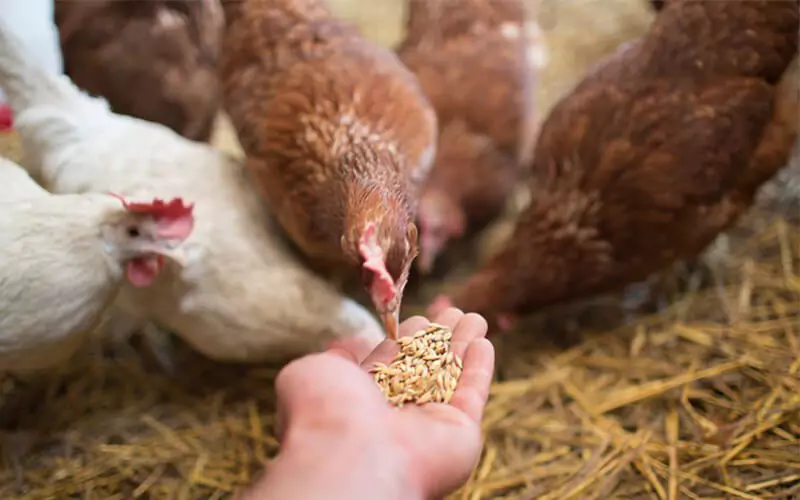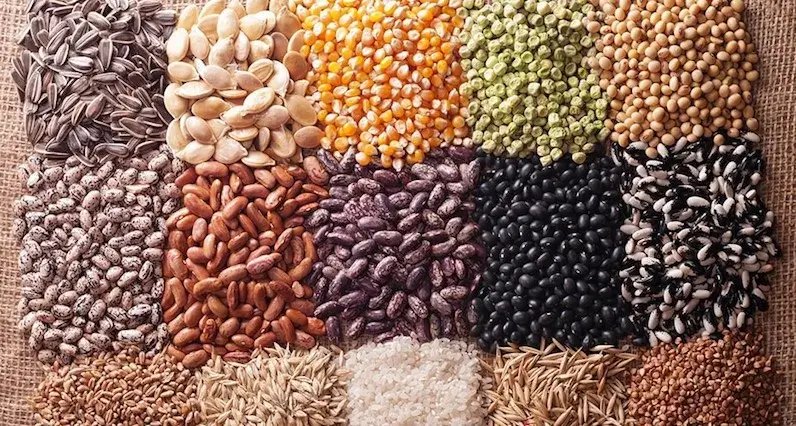Introduction
For every broiler farmer, the biggest number on the expense sheet is always the feed bill. Watching the price of commercial feed go up can feel like watching your profits disappear. But what if you could take back control?
This guide is all about a smart strategy: low-cost broiler feed formulation. It’s not about using cheap, bad ingredients. It’s about using affordable, local ingredients wisely to create a high-performance feed without breaking the bank. We’ll show you the principles, the alternative ingredients to look for, and how to think about creating your own money-saving broiler feed recipes.
The Goal of Low-Cost Formulation: Good Performance at a Better Price
The main goal here is to find the right balance for your farm.
It’s a Balancing Act
Broilers are fast-growing birds with high nutritional demands. The goal of a low-cost formulation is to meet these needs for fast growth. But you want to do this while lowering your final cost per kilogram of feed.
The Key is Smart Ingredient Substitution
The core principle is simple. You strategically replace some of the expensive, standard ingredients in a feed recipe. You swap them with effective, cheaper, and often locally available alternatives, without sacrificing the overall quality of the feed.
Finding Cheaper Ingredients: Your Guide to Smart Alternatives
The best way to lower your feed cost is to know your options beyond just corn and soybean meal.
Alternative Energy Sources (Instead of Just Corn/Maize):
Sorghum:
A great energy source, very similar to corn. Some varieties can be high in tannins, which can affect digestion, so it’s good to know what kind you are getting.
Millet:
Another hardy grain that is rich in energy and can be a good substitute for corn in many areas.
Cassava Meal:
An excellent and often very cheap source of energy. Keep in mind it is very low in protein, so you will need to balance your formula accordingly.
Wheat Bran:
A good source of both energy and fiber. It’s a useful by-product from flour milling.
Alternative Protein Sources (Instead of Just Soybean Meal):
Sunflower Meal:
A good source of protein, though it is lower in some key amino acids like lysine compared to soybean meal.
Cottonseed Meal:
Can be an affordable protein source. However, you must use a variety that has been processed to have low gossypol levels, as high gossypol can be toxic to chickens.
Groundnut Cake:
The meal left after pressing groundnuts (peanuts) for oil is a good source of protein.
Palm Kernel Cake:
In areas where palm oil is produced, this by-product can be a very cost-effective protein ingredient.
Insect Meal:
This is an emerging option. Meals made from insects like Black Soldier Fly Larvae are very high in quality protein and can sometimes be produced locally.
Finding Local Fiber & Fillers:
These can be useful in small amounts. Examples include Rice Bran or Brewers' Grains if you are located near a brewery.


The Building Blocks of a Great Feed
A balanced diet for a broiler chicken really comes down to three main ingredients in broiler feed. Let’s break them down.
1.Protein: The Engine of Growth
Protein builds muscle. It’s that simple. It gives your broiler chickens the strength and size you’re looking for.
The Gold Standard:
Soybean Meal:
It’s the top choice for a reason. It has a nearly perfect amino acid profile for broilers. The only downside is the price.
Fish Meal:
Packed with protein and healthy fats in broiler feed formulation. It’s very effective but also expensive, and it can sometimes affect the meat’s final taste.
Smarter, Cheaper Choices:
Canola Meal:
A great budget-friendly protein. You’ll just want to mix it with another source to get the amino acid balance right.
Sunflower Meal:
Another solid, cost-effective option. It’s best used in moderation as part of a larger blend.
Insect Meal:
This is a newer, very sustainable choice. If you can source it locally, it’s a fantastic option.
2.Fats: The Source of Energy
Fats are concentrated energy. They give your birds the fuel they need to stay active and warm.
Common Go-To’s:
Palm & Chicken Fat: Both are high in energy and work well. They can be costly and harder to source consistently.
Cost-Effective Alternatives:
Recycled Cooking Oils: This can be a huge money-saver. The key is quality. You must make sure it’s clean and free of contaminants.
Vegetable Oils: Cheap and easy to find. Just use them wisely to keep the essential fatty acids in balance.
3.Carbohydrates: The All-Day Fuel
Carbs are the bulk of the diet. They provide the everyday energy for your flock and are usually the least expensive part of your broiler feed formulation.
The Classics:
Corn & Wheat: Both are easy for chickens to digest. Their prices can swing high, so watch the market.
Budget-Friendly Fillers:
Barley & Sorghum: These are tougher grains and offer a bit less energy. They become great options when you add a simple enzyme to help with digestion.
Rice By-products: A very cheap way to add bulk, but don’t overdo it. They are low in overall nutrition.

Practical Tips for Low-Cost Feed Success
Know Your Local Prices and Seasons
“The ‘cheapest’ ingredient is not the same everywhere or all year round. The price of maize right after harvest is very different from the price several months later. Always know what’s abundant and affordable near you, right now.”
Test Your Ingredients If You Can
Not all soybean meal has the exact same protein content. If you can get your main ingredients tested for their actual protein and energy levels, it helps you create your formulas with much greater accuracy.
Always Introduce New Diets Slowly
“Never switch your broilers’ feed suddenly from one type to another. Always mix the new, low-cost formula with their old feed for about a week. Gradually increase the amount of the new feed each day. This lets their digestive systems adjust and prevents stress.”
Watch Your Birds’ Performance – They Are Your Final Report
“The numbers on your recipe paper don’t mean anything if your chickens aren’t growing well. Your birds are your best guide. Are they active and healthy? Is their weight gain on track? Their performance will tell you if your low-cost formula is a true success.”
Chicken Broiler Feed Formulation
| Ingredient | Starter Feed (0-3 weeks) (%) | Grower Feed (4-5 weeks) (%) | Finisher Feed (6-8 weeks) (%) |
| Proteins | |||
| Soybean Meal | 30 | 25 | 20 |
| Fish Meal | 5 | 3 | 2 |
| Fats | |||
| Palm Oil | 3 | 3 | 3 |
| Chicken Fat | 2 | 2 | 2 |
| Carbohydrates | |||
| Corn | 50 | 55 | 60 |
| Wheat | 5 | 5 | 5 |
| Minerals & Vitamins | |||
| Limestone | 1 | 1 | 1 |
| Salt | 0.3 | 0.3 | 0.3 |
| Vitamin & Mineral Mix | 0.2 | 0.2 | 0.2 |
| Fiber | |||
| Rice Hulls | 3 | 4 | 4 |
| Others | |||
| Enzyme Mix | 0.5 | 0.5 | 0.5 |
FAQ
What is the single biggest way to reduce broiler feed cost?
A: The biggest way is to replace a portion of the two most expensive ingredients, which are usually corn (maize) for energy and soybean meal for protein. You can do this by substituting them with more affordable local alternatives, such as cassava, sorghum, or sunflower cake, in a well-balanced recipe.
Can I make broiler feed without using any soybean meal at all?
A: This is difficult and should be done with great care. You would need to combine several other protein sources (like sunflower meal, groundnut cake, and maybe some fish meal or insect meal) very carefully. This is to ensure the birds get all the essential amino acids they need for proper growth. This usually requires expert help from a nutritionist.
Are alternative ingredients like cassava or sunflower meal as “good” as corn and soy?
A: They can be, but only if they are used correctly in a balanced formula. Some alternative ingredients may have lower digestibility. Others might contain “anti-nutritional factors” (like tannins in some sorghums or gossypol in some cottonseed meals). This is why it’s important to understand the pros and cons of each ingredient and not just substitute them directly one-for-one.
What is the best way to start formulating a low-cost recipe?
A: A good way to start is to get a standard broiler feed formula (for example, from a university or an agricultural extension service). Then, identify one or two of the most expensive ingredients in that formula. Research what local, cheaper alternatives you have for that ingredient. Finally, start by creating a new formula where you substitute only a small portion (for example, 25%) of the expensive ingredient with the cheaper one.
Does making my own low-cost feed affect the taste of the final chicken meat?
A: Generally, no. As long as you are using quality grains and standard plant-based proteins, the taste of the meat is usually not affected. However, using very high amounts of certain unusual ingredients, like high levels of fish meal, very close to processing time can sometimes influence the taste. This is another reason why a well-balanced formula is important.
Conclusion
Low-cost broiler feed formulation is a smart strategy for any farmer who wants to improve their profitability. It’s not about using bad ingredients. It’s about wisely using local, affordable alternatives without giving up the key nutrition your broilers need for fast, healthy growth. With careful planning and by paying close attention to your birds, you can take significant control over your biggest farm expense.
